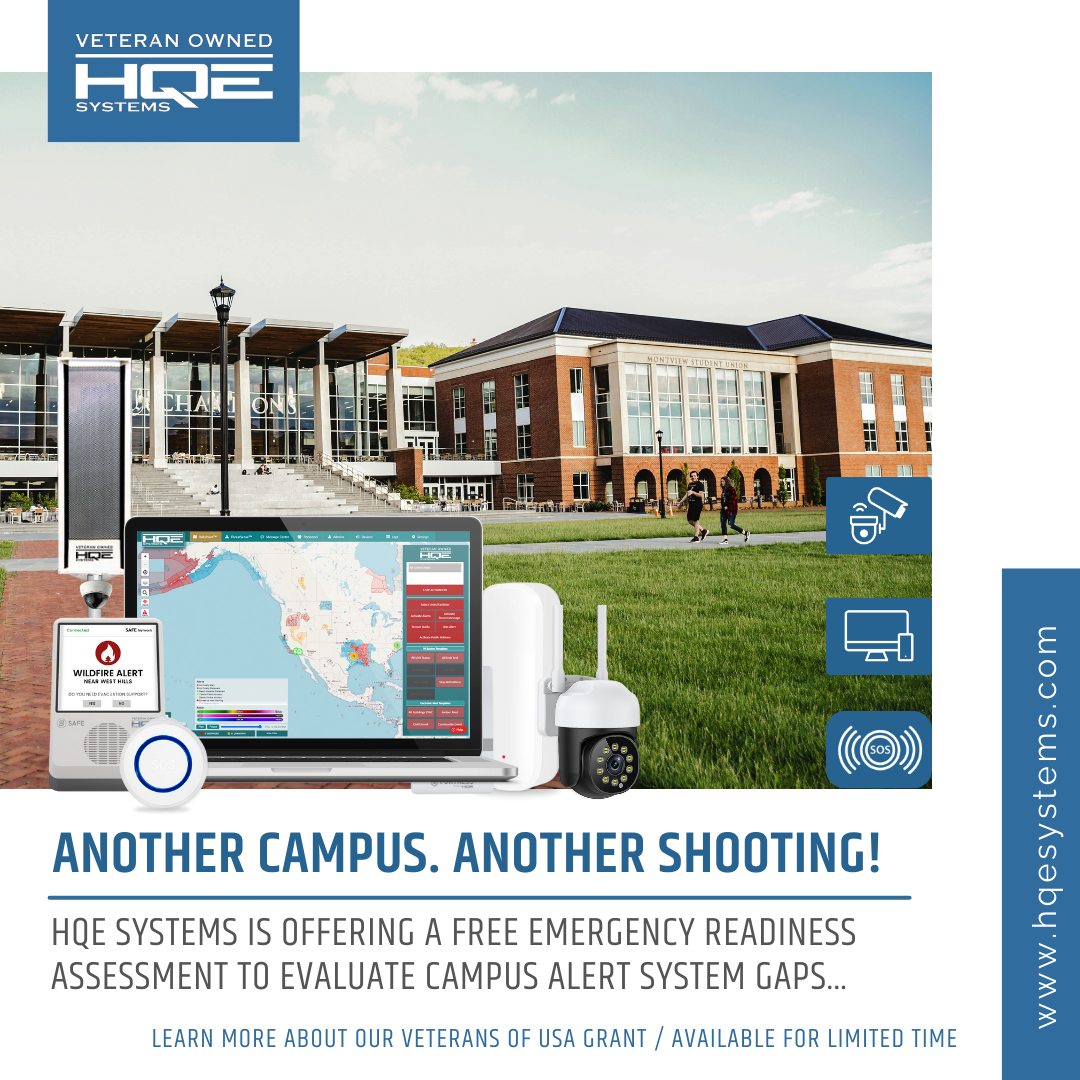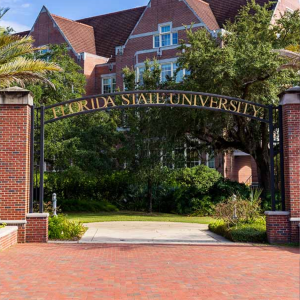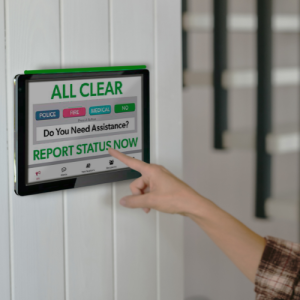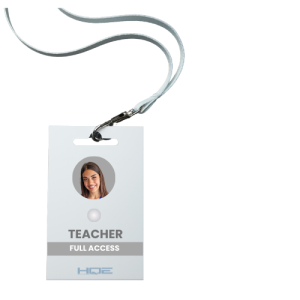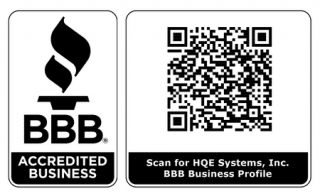When Normal Disappears in an Instant
On a sunny Thursday afternoon, April 17, 2025, the Florida State University campus pulsed with the energy of spring—students rushing to class, friends grabbing coffee at the Union, laughter floating through the air like any other day. But in the span of moments, that familiar rhythm was shattered by the unthinkable. Gunshots rang out. Panic erupted. And the place meant to foster learning, connection, and safety became the scene of heartbreak and horror.
What happened at FSU is more than just a headline—it’s a sobering reminder that even in our most trusted spaces, safety can’t be taken for granted. For the students, faculty, and families forever changed by that day, life has been split into two parts: before and after. And for every campus across the country, the question now becomes—are we truly prepared if the unthinkable happens here too?
The Day That Changed Everything: A Detailed Account of the FSU Shooting
On April 17, 2025, the Florida State University (FSU) campus in Tallahassee was rocked by a tragic shooting that left two people dead and six others injured. The incident unfolded around noon near the Student Union, a central hub for student activity.
Timeline of Events
At approximately 12:01 p.m., Florida State University’s emergency alert system notified students and staff of an active shooter near the Student Union. The message urged individuals to shelter in place and avoid the area. Witnesses soon reported hearing multiple gunshots, which triggered widespread panic as students fled or barricaded themselves in nearby classrooms and buildings.
Law enforcement responded within minutes. The shooter, later identified as 20-year-old FSU student Phoenix Ikner, was located by officers, shot after refusing to comply with commands, and taken into custody with non-life-threatening injuries. As told by CBS News, 2025, the entire incident unfolded rapidly in one of the most populated areas on campus.
Further coverage confirmed the suspect’s identity and rapid police engagement. AP News, 2025.. His actions left two individuals dead and six others injured—most of whom were hit by gunfire, while one person was injured while attempting to flee.
According to CBS News Miami, 2025, the university quickly issued multiple follow-up alerts reinforcing the lockdown while officers secured the area. The shooter’s background and the speed of the incident have led to growing national discussions around campus readiness, law enforcement coordination, and the communication gaps that often arise during sudden violence.
Victims and Identities
The two individuals who tragically lost their lives during the Florida State University shooting were not students, but they were deeply connected to the university community.
Robert Morales, a campus dining services employee and former high school football coach, was widely respected for his dedication to student life and mentorship. He had become a familiar, friendly presence in the Student Union and was known for building strong relationships with both students and staff. Morales was not only a valued team member but also a beloved figure in the local community, remembered for his “compassionate leadership and calming presence.”
Tiru Chabba served as a regional vice president for a food service vendor that operated on the FSU campus. A married father of two from South Carolina, Chabba had traveled to Tallahassee that day for routine campus business. According to AP News, 2025, he was among the first victims of the shooting. His family later spoke out publicly, asking for a thorough and transparent investigation into the incident and expressing their heartbreak over losing someone so deeply committed to both his work and his family.
The devastating loss of Morales and Chabba has become a symbol of the broader impact of campus violence—touching not only students but the many dedicated individuals who support campus life each day (CBS News, 2025).

Eyewitness and Student Reactions
Students and faculty described scenes of terror and confusion as the FSU shooting unfolded. Some used chewing gum to black out windows, while others barricaded doors with chairs and desks or hid inside closets and elevators. These improvised survival efforts highlighted the stark reality many students face in emergencies—relying on instinct over structured safety protocols. As reported by AP News, 2025, the chaos was immediate and intense, with students fleeing in all directions as the situation escalated.
Among those caught in the incident was a student who had previously survived the 2018 Marjory Stoneman Douglas High School shooting in Parkland, Florida. That student shared their disbelief at experiencing a second campus shooting, underscoring the long-lasting emotional toll of repeated exposure to gun violence, as noted in AP News, 2025.
Videos shared across social media platforms captured the confusion—students running across green spaces, some ducking behind trees, others being escorted by officers with rifles drawn. According to CBS News, 2025, the university immediately canceled all classes and operations through Friday. As detailed further by AP News, 2025, all athletic events were suspended through Sunday, allowing the campus time to regroup and grieve.
Law Enforcement Response
The rapid response by law enforcement is credited with preventing further casualties. Officers from multiple agencies arrived on the scene promptly, secured the area, and apprehended the suspect. The university’s emergency alert system played a crucial role in notifying the campus community, though some students reported delays in receiving alerts.
In the aftermath of the shooting, the university community has come together to mourn the victims and support those affected. Vigils have been held, and fundraisers have been launched to assist the families of the deceased. The incident has sparked renewed discussions about campus safety and the need for effective emergency communication systems.
This account is based on information available from various news sources, including CBS News, CBS Miami, and AP News.
Healing Together: The FSU Community’s Journey After Tragedy
In the wake of the April 17, 2025, shooting at Florida State University (FSU), the campus community has come together in shared grief, reflection, and support as they begin the healing process.
University Support Services
Immediately following the tragedy, FSU activated its Victim Advocate Program, providing confidential assistance to students and staff impacted by the event. The university also increased availability of Counseling & Psychological Services, ensuring that professional mental health resources were accessible for those in need. These services were publicized in collaboration with external crisis networks, such as MassViolence.Help, a site designed to support survivors and communities affected by mass violence.
Leadership’s Response
FSU President Richard McCullough addressed the campus during a community gathering, stating, “This is the kind of trauma that changes people, and it changes a place, but it does not define us. What defines us is how we respond.” His message focused on resilience, unity, and compassion in the face of unimaginable loss, as reported by WUSF, 2025 and Axios, 2025.
Community Vigils
On April 18, thousands of students, faculty, and community members gathered at Langford Green for a candlelight vigil in honor of the victims. The event featured remarks from university leadership, moments of silence, and floral tributes. As documented by Florida State University News, 2025 and WUSF, 2025, the vigil was both somber and hopeful, representing the campus’s determination to heal together.
Reflections from Parkland Survivors
For some students, the shooting at FSU reopened wounds from past trauma. One survivor of the 2018 Marjory Stoneman Douglas High School shooting in Parkland, Florida, who now attends FSU, expressed disbelief at living through a second school shooting. According to WUSF, 2025 and AP News, 2025, their story has reignited national conversations around long-term trauma, school safety, and the need for compassionate response systems on college campuses.
Lessons from the FSU Shooting: The Imperative for Enhanced Emergency Communication
The tragic events at Florida State University (FSU) on April 17, 2025, underscore the critical importance of robust and comprehensive emergency communication systems on college campuses.
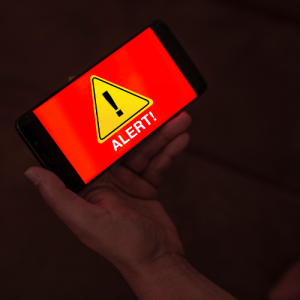
Prompt Alert Issuance
FSU’s emergency alert system was activated promptly, with the first notification issued at 12:01 p.m., shortly after the shooting began near the Student Union. This swift action likely contributed to minimizing further casualties by urging students and staff to seek immediate shelter.
Challenges in Communication Clarity
Despite the timely alerts, some students reported confusion regarding specific emergency protocols. For instance, the use of the code word “SEMINOLE” by law enforcement to identify themselves during room clearings was not widely known among the student body, leading to uncertainty during critical moments.
Physical Security Concerns
In certain instances, students encountered difficulties securing their classrooms due to doors that did not lock from the inside. This led to improvised measures, such as using furniture to barricade doors, highlighting the need for comprehensive physical security assessments in tandem with communication protocols.
The Need for Inclusive Communication
While FSU’s alert system functioned effectively in many respects, the incident brings to light the importance of ensuring that emergency communications are accessible to all members of a diverse campus community. This includes considerations for multilingual support and accommodations for individuals with disabilities, ensuring that critical information reaches everyone promptly and clearly.
Moving Forward
The FSU incident serves as a poignant reminder that even well-established emergency systems can benefit from continual evaluation and enhancement. Institutions must strive for not only rapid alert dissemination but also clarity, inclusivity, and comprehensive physical security measures. By addressing these areas, universities can better safeguard their communities against future emergencies.
From Reflection to Action: Reimagining Campus Safety
As institutions grieve, they must also reflect—not only on what happened, but on what could’ve helped. The heartbreaking events at Florida State University are a reminder that no emergency system is ever “good enough” when lives are on the line. Even when alerts go out on time or first responders arrive quickly, small gaps in communication or awareness can make a difference in how safe people feel—and how many lives are saved.
This isn’t just about what happened—this is about how we prepare for what could happen next.
That’s where HQE Systems steps in. As a national leader in emergency alerting and mass communication technology, HQE designs systems that go beyond compliance to deliver true clarity, speed, and inclusiveness. Whether it’s ADA-accessible notifications, multilingual alerts, or systems that stay operational during power outages, HQE Systems helps campuses close the gap between “standard protocol” and real-world readiness.
Because when seconds matter, the message must be instant. When panic sets in, communication must be clear. And when the worst happens, every student and staff member deserves to feel protected.
HQE Systems: Bridging the Gap Between Emergencies and Action
When it comes to campus safety, good isn’t good enough. In an emergency, every second counts—and every person matters. HQE Systems was built around that principle. As a veteran-owned leader in emergency mass notification and life safety technologies, HQE delivers cutting-edge, highly adaptable systems that do more than just alert—they protect, guide, and empower.
Here’s how HQE is solving the real problems campuses face today:
ADA Compliance: Because Everyone Deserves to Be Informed
Emergencies don’t discriminate—and neither should alert systems. HQE’s mass notification systems are built to meet ADA (Americans with Disabilities Act) requirements, providing visual alerts for the hearing impaired, audio alerts for those with vision impairments, and inclusive tools for users with sensory sensitivities. Accessibility isn’t a feature—it’s a standard across HQE’s hardware and software offerings.
Multilingual Alerts for Diverse Campus Communities
Modern campuses serve diverse populations. HQE’s technology allows for instant multilingual alerts across SMS, email, digital signage, desktop pop-ups, and PA systems. In emergencies, speed and clarity in a person’s primary language can save lives. With HQE, institutions ensure everyone—from international students to ESL faculty—receives critical updates they can understand and act on immediately. Supports instant, one-click translation of emergency alerts into 133 languages, ensuring timely and accurate communication for diverse communities.
Power-Outage Resilience
Emergencies often knock out power first, rendering many systems useless. HQE’s infrastructure is engineered for resilience. With solar charging options, battery backup, and satellite communication capabilities, HQE’s systems stay online when others fail. The SAFE Network and SAFE Unit™ both operate independently of local power grids, ensuring uninterrupted communication even during storms, blackouts, or infrastructure attacks.
Smart System Integration
Universities often use multiple alert tools—but many don’t talk to each other. HQE’s unified software integrates email, text, voice, indoor and outdoor PA systems, desktop alerts, mobile apps, digital signage, and sirens into one seamless interface. This eliminates delays caused by juggling platforms and allows emergency managers to push alerts across every channel simultaneously with one click.
Real-Time Geo-Targeted Alerts
Every second and every square foot matter during a crisis. HQE allows emergency managers to send alerts based on real-time location—down to a specific building, wing, or floor. Geo-targeting prevents campus-wide panic and enables responders to focus communications only where needed, reducing information overload and confusion.
Fortress™: The Staff & Faculty Safety Companion
In active threat situations, teachers and staff become first responders before help arrives. Fortress™ is HQE’s app-based companion tool that empowers faculty and administrators to silently signal danger, initiate lockdowns, or receive real-time updates from campus security. It turns every mobile device into a panic button and command post—enhancing both speed and discretion when it matters most.
The SAFE Unit™: A Visible, Indoor Line of Defense
The SAFE Unit™ is HQE’s flagship indoor alerting device. Mounted in high-traffic areas like libraries, dorms, cafeterias, and lecture halls, it delivers visual and audible emergency messages that are ADA-compliant and multilingual. Each SAFE Unit™ has its own power and data redundancy, remaining active even when local infrastructure fails. These devices can display evacuation maps, countdown timers, and emergency status updates in real time.
Proven in the Field
HQE Systems has been trusted by schools, military bases, and local governments across the country. Its systems have been deployed in areas with frequent wildfires, hurricanes, power outages, and even cyberattacks. Every client receives personalized support, hands-on training, and a full-scale deployment plan to ensure success. With a record of helping institutions modernize their safety posture, HQE doesn’t just promise preparedness—it delivers it.
What If FSU Had HQE Systems That Day?
Imagine the scene: a crowded student union, the buzz of conversation, the hum of midday campus life. Then, a gunshot. Panic begins to ripple through the building, students scrambling for cover, faculty unsure of what’s unfolding. But instead of confusion and hesitation, an immediate, unmistakable message flashes across every digital sign, every phone, every classroom screen:
“ACTIVE SHOOTER — SHELTER IN PLACE — STUDENT UNION”
With HQE Systems in place, that warning wouldn’t have come from just a text or email. Students in loud dining areas, busy hallways, or isolated corners of campus would have seen the alert broadcast across networked PA systems, digital signage, desktop computers, and the high-visibility indoor SAFE Unit™ displays. Every second would count—and every communication channel would activate at once.
Faculty in surrounding buildings wouldn’t be left in the dark. Through HQE’s Fortress™ app, teachers and staff could have received verified updates in real time, locked down classrooms from their smartphones, and even issued silent alerts to campus security—without ever opening a door or stepping into harm’s way.
Students who were deaf or hard of hearing would have seen the message clearly. Those who didn’t speak English fluently would have received it in their native language. HQE’s multilingual and ADA-compliant platform ensures every person on campus is informed, empowered, and able to act.
And if the power grid had failed, the system wouldn’t have. HQE’s solar-powered and battery-backed infrastructure would have kept alerts flowing, communication active, and chaos contained.
While we can’t change the past, we can change the way we prepare for the future. With HQE, clarity replaces confusion—and campuses gain the power to respond before panic takes hold.
It’s Time to Act Before the Next Emergency
In the aftermath of tragedy, one truth becomes crystal clear: waiting until something goes wrong is no longer an option. Every day without a fully modernized, responsive emergency communication system is a day your campus stays vulnerable.
That’s why HQE Systems is offering a Free Emergency Readiness Assessment—built specifically for campuses like yours.
This quick, no-obligation assessment helps you answer the critical questions:
-
Are alerts reaching everyone, including students with disabilities or limited English proficiency?
-
Can your system operate during power outages or cellular disruptions?
-
Can faculty initiate lockdowns or send silent alerts when seconds matter?
-
Are alerts geo-targeted or sent campus-wide with no precision?
Don’t wait until your campus is in the headlines.
Let us help you identify gaps and strengthen your system before the next crisis unfolds.
👉 Start your free assessment today: hqesystems.com/safe-campus-2
Or reach out to us directly at ask@HQESystems.com or 1-800-967-3036.
Your students and faculty are counting on leadership that acts before—not after—a crisis.
You can be the reason your campus is ready.
HQE Systems is a certified Veteran Owned Company. For more information about HQE Systems Inc. and its emergency management, electronic security, and integration solutions, please visit www.hqesystems.com.

Contact: David Ditto (Early Warning Systems Subject Matter Expert)
Email: David.Ditto@hqesystems.com
Phone Number: (843) 872-7020
____________________
HQE Systems, Inc. | HQE is a Minority-Owned Service Disabled Veteran Owned Small Business (SDVOSB) providing full solutions for: Mass Notification Systems, Electronic Security Systems, Software Development Services, Contract Support, and Prototyping Services. As a brand-agnostic solutions provider, HQE prides itself in providing the BEST solution for the project. HQE possesses over 30+ factory certifications and reseller licenses to ensure our clients receive the highest quality service at the ideal budget. HQE can provide full design, installation, integrations, upgrades, and long-term maintenance support for any size and scope project.

